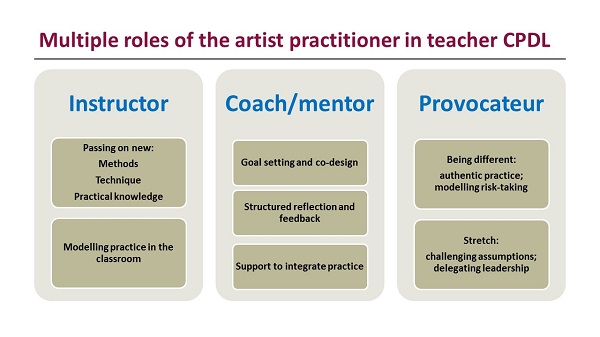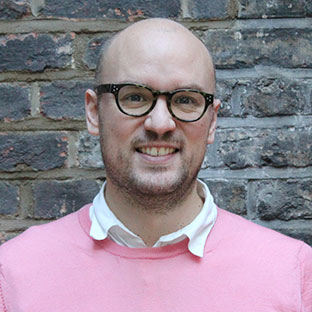As part of the RSA’s Performing Arts Hub project, a number of West Midlands primary schools, including some of the RSA academies have worked with drama practitioners to embed drama into their curriculums. The first year of the project taught us some valuable lessons in how to frame the relationship between teachers and artist practitioners, in order to maximise the learning.

Performing Pedagogy is a project run by Arts Connect and the RSA that, as one of the Paul Hamlyn Foundation Teacher Development Fund pilot projects, works with artists to help schools to embed learning through the arts.
In the project, artist practitioners (drama specialists) work with primary school teachers to co-design and evaluate drama-based lessons intended to improve KS1 & 2 children’s narrative writing and storytelling. In addition to these academic outcomes, the project aims to:
- Support teachers to be more autonomous in the use of drama, increasing their confidence to take considered risks, their willingness to step out of comfortable patterns of behaviour;
- Allow for uncertainty in the classroom and thereby support children’s confidence to express themselves freely.
During the project’s first year, the programme team noticed that teachers and artists practitioners didn’t always have common vocabulary to describe the various ways in which they might work and learn together. Artist practitioners and teachers tended towards familiar roles of ‘trainer’ and ‘trainee’, respectively, but both groups felt that this limited the benefit that they could derive from the process.
The programme does include training and in-class modelling to build teachers’ technical knowledge of drama, but embedding these new ideas into ongoing practice requires more role flexibility from both parties, responsiveness to learners and ongoing negotiation between the teacher and artist practitioner.
What we saw was that maintaining a trainer/ trainee relationship prioritised putting new technical knowledge into action, over and above reflection on its appropriateness to a given context/ learning objective.
To improve the effectiveness of the programme in its second year, we realised that teachers and artist practitioners needed stronger support to enable effective reflection on their practice. Teachers’ prior knowledge of drama varied, prompting us to provide a more reflective, personalised and differentiated process. We wanted to encourage more reflective thought about the more intuitive aspects of why, how and when to incorporate drama into teaching, rather than just the correct implementation of new techniques.
In response, structured reflection sessions (based on the Lesson Study model) that follow teachers’ experiments with drama were redesigned to incorporate artist practitioners’ feedback and insight. We also wanted to encourage artist practitioners to see this as a professional learning opportunity for themselves, so we included them in structured reflection on learners’ responses to the use of drama.
To support these changes, we’ve defined three different roles that artist practitioners might play, in order to help make it easier to negotiate the various kinds of support and collaboration needed as the project progresses:

The framework was based on evidence in the Teacher Development Trust’s Developing Great Teaching systematic review, that in the best continuing professional development and learning (CPDL), specialist support includes modelling, coaching, observation and feedback.
We wanted to ensure that our framework would help artist practitioners to model not only drama strategies, but the kind of reflexivity and responsiveness to uncertainty that we want teachers to embed into their own practice. We also wanted to be explicit about the distinctive contribution that artist practitioners can make in helping teachers to challenge their own assumptions of what works in the classroom.
Importantly, the wording of the role descriptors encourages artist practitioners and teachers to work collaboratively, support integration, and delegate leadership for learning – all of which require ongoing negotiation and responsiveness to both teacher and learners’ needs.
The three roles were negotiated and agreed with teachers, senior leadership team members and the artist practitioners on the programme. Discussion about them also formed part of whole-staff presentations made by artists on their first visit to schools.
Negotiating them in these ways was important for two reasons:
- To make sure that they correspond with what really does (or might usefully) happen between teachers and artists;
- Provide that missing shared vocabulary to support their conversations.
The programme team have been careful to introduce the roles not as fixed ideas, or as a hierarchy or a linear process – they can apply to work with teachers at all levels of prior knowledge and experience.
We have invited teachers and artist practitioners to report on how they are using, adapting and alternating between the roles at different points over the course of the programme.
Initial responses to the framework were positive and both teachers and artist practitioners immediately began using them in their conversations and documentation of visits and we will review their impact at the end of this year’s programme.
Watch this space for more reports as the project develops…

Be the first to write a comment
Comments
Please login to post a comment or reply
Don't have an account? Click here to register.